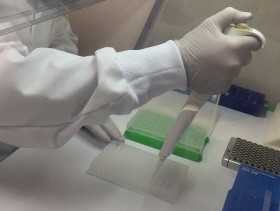



Diagnostics Offer Opportunity to Reduce Antibiotic Use
ANALYSIS - At a time when the industry is looking for every opportunity to reduce the use of antibiotics, diagnostics offer a solution.“There's a lot changing in the industry today, and the US is pretty well along in terms of some of the changes with respect to Veterinary Feed Directives and the role for veterinarians in the oversight of the use of antimicrobials,” said George Charbonneau, veterinarian with South West Ontario Veterinary Services in Canada. “And for veterinarians to be responsible to authorize the use of antimicrobials, they really have to understand and have an evidence-based approach to triggering the use of those products.”

Oversight often means using diagnostics to measure the level of infection or confirm the presence of a pathogen on-farm.
Some studies indicate that producers are faring quite well without antibiotics. However, for others, the transition has not been quite as easy, he said. It's a case-by-case basis for producers and veterinarians to work their way through the process of reducing antibiotic use.
“Veterinarians are going to be making more and more use of diagnostics,” Dr. Charbonneau said. “We're trying to look at overall ways to reduce the use of product, but we know that from time to time, we need to use antibiotics to prevent animal suffering and improve animal welfare. It needs to be done in a prudent way with good stewardship in mind of preserving the products.”
One goal of diagnostics is to help veterinarians zero-in on what they are treating.
“In the bigger context, [veterinarians] can look at [specific pathogens] and say there are viral diseases that we don't use antimicrobials for, but they allow more secondary bacterial infections, which then necessitate the use of those antimicrobials,” he said. “The more we use diagnostics to control and prevent those primary diseases, the better effect we'll get on controlling the secondary bacterial problems.”
For more information about swine diagnostics, click here or connect to the Thermo Fisher Scientific Swine Resource Center.









